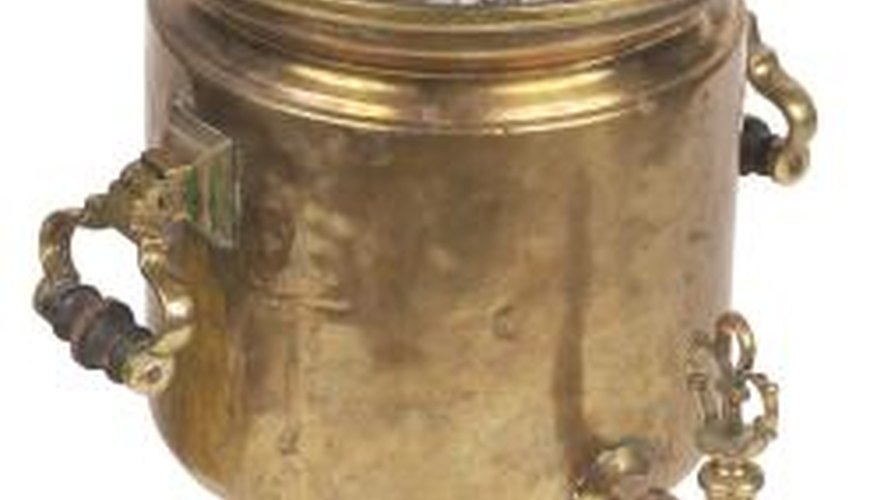Samovars are powerful symbols of the endurance of the Jewish family throughout centuries of Eastern European history. As tides of Jewish immigrants arrived in the United States in the 19th and 20th centuries, these often ornate vessels arrived with them. There are unlimited accents and personalizations that may define any given piece, but they are also subject to many commonalities.
Identify the metal. The main body of the samovar should be made of metal. The colours, hues or patinas may vary, but the most common construction materials are bronze, copper, brass and iron. In some specimens, the lustre will be very noticeable; in others, the shine of the metal is muted. In terms of colour, some will emphasise the splendour of the metals, while others have been painted with brilliant pastels or wood finishes.
- Samovars are powerful symbols of the endurance of the Jewish family throughout centuries of Eastern European history.
- The colours, hues or patinas may vary, but the most common construction materials are bronze, copper, brass and iron.
Observe the basic shape. The typical samovar will be more rounded or wider in the top portion. They often appear conical, generally getting thinner as you progress downward to the base.
- The typical samovar will be more rounded or wider in the top portion.
Inspect other features and design elements. Samovars usually have 2 handles on opposite sides of the upper portion. The very top of the samovar is designed to accommodate a kettle or other water-heating vessel. There is often a spigot located on the side. Some specimens will come with the original kettle attached, whereas others will not. The thin base consists of a clawed foot, frequently equipped with 3 or 4 individual claws.
Be aware of diversity. Much artistic license was employed in samovar manufacture, and no 2 of these antiques will be exactly the same. Even in factory settings, production seldom yielded more than a few per day of work.
- Much artistic license was employed in samovar manufacture, and no 2 of these antiques will be exactly the same.
Have the piece professionally dated. Some of the most prized samovars come from the late imperial era -- the 18th, 19th and early-20th centuries. You may come across a reproduction that does not demonstrate an authentic pedigree or provenance connected with this period. Bring the samovar to an expert in Russian, Jewish and/or Eastern European antiques to establish the date of the piece. If you are in any doubt, obtain a second opinion as well.
TIP
Always check with a qualified antiques dealer if you are in doubt as to a purchase such as this.
